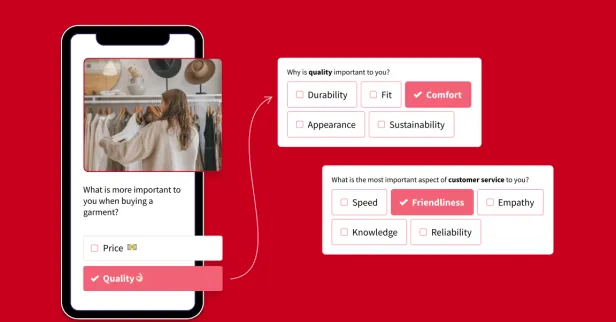In pricing research, a Gabor-Ganger study offers a systemic approach to understanding price sensitivity and demand elasticity for a product. It helps organizations make more informed pricing decisions that drive revenue and maintain competitiveness.
However, like any research methodology, Gabor-Granger studies come with their own set of best practices. In this article, we'll explore key best practices for conducting Gabor Granger pricing studies:
Best Practices for Gabor Granger Pricing Studies
1.Define Clear Objectives
Before embarking on your Gabor-Granger pricing study, it's crucial to define clear and specific objectives that align with the goals of your business. Take the time to thoroughly analyze what you hope to achieve through the study. Are you seeking insights into consumer price sensitivity for a new product launch? Or perhaps you aim to optimize your pricing strategies for an existing product line? By defining your objectives upfront, you can tailor that the study's design and execution to address your specific needs.
2. Select Representative Samples
Selecting a representative sample is paramount to the success and validity of your Gabor Granger pricing study. It's essential to ensure that your sample size and composition accurately reflect your target market's demographics, preferences, and behaviors. Start by identifying the critical characteristics of your target audience, like age, gender, income level, geographic location, or specific shopping behaviors. Then, you can use appropriate sampling techniques recruit participants who mirror these attributes. By selecting a representative sample, you can ensure that the insights gained from the study are applicable and actionable for your target market.
3. Randomize Price Points
To minimize bias and ensure the accuracy of the study results, it's crucial to randomize the order of the price points shown to respondents. Randomization helps to mitigate the influence of order effects, where respondents' reactions may be influenced by the sequence in which prices are presented. By presenting prices in a randomized order, you can ensure that responses are based solely on the prices presented rather than any preconceived expectations or biases. This approach helps to enhance the validity and reliability of the study findings, providing a more accurate representation of consumer behavior.
4. Include Price Sensitivity Metrics
Incorporate price sensitivity metrics into your Gabor-Granger pricing study to better understand consumer behavior and preferences. Price sensitivity metrics provide quantitative measures of how changes in price impact consumer purchasing decisions. By analyzing these metrics, businesses can identify the price points most likely to resonate with their target audience and optimize their pricing strategies accordingly. As a bonus, price sensitivity metrics can also help you assess the potential impact of price changes on company revenue and profitability.
5. Analyze Segmentation Differences
Consumer preferences and behaviors can vary significantly across different market segments. Therefore, conducting a segmentation analysis as part of your Gabor-Granger pricing study is important. Segmentation analysis involves dividing your target market into groups based on demographic, psychographic, or behavioral characteristics. By analyzing how price sensitivity and demand differ among these segments, you can tailor their pricing strategies to better meet the needs and preferences of each group. This approach allows for more targeted and effective pricing decisions, ultimately increasing customer satisfaction and loyalty.
6. Account for External Factors
When conducting a Gabor-Granger pricing study, you should also account for external factors influencing consumer perceptions of price. These factors include competitor pricing strategies, economic conditions, industry trends, and seasonal fluctuations. Considering these external factors in your analysis, you can ensure that your study's results accurately reflect real-world market dynamics. Failure to account for external factors can lead to unrealistic pricing recommendations that do not align with market realities, ultimately hindering business performance.
7. Iterate and Refine
Gabor Granger pricing studies are iterative processes that require ongoing refinement and optimization. After conducting an initial study, take the time to analyze the results and identify areas for improvement. Consider factors like sample size, survey design, and pricing scenarios, and iterate on your approach to enhance the accuracy and reliability of future studies. You can develop more robust pricing strategies that drive long-term success by continuously refining your methodology based on feedback and insights gained.
8. Validate Findings Through Market Testing
While Gabor-Granger studies provide valuable insights into consumer purchasing behavior and pricing preferences, validating your findings through real-world market testing is essential. Implement pricing strategies based on the study results and monitor consumer response to assess their effectiveness. Market testing allows businesses to verify the applicability of study findings in real-world scenarios and make adjustments as needed. By validating study findings through market testing, organization can ensure that their pricing strategies are aligned with consumer preferences and market dynamics, ultimately leading to greater success.
Gabor-Granger Pricing Studies with SightX
SightX is an AI-driven market research platform offering a single unified solution for product, brand, marketing, and pricing research. While powerful enough for insights teams at Fortune 500 companies, our user-friendly interface makes it simple for anyone to start, optimize, and scale their research.
And with our Generative AI consultant, Ada, you can harness the power of OpenAI's GPT to transform your marketing research and insights. Collaborating with Ada is like having an expert researcher, brilliant statistician, and ace marketer on your team, helping you ask the right questions, choose the best experiments, pick out key insights, and seamlessly apply them to your business.
